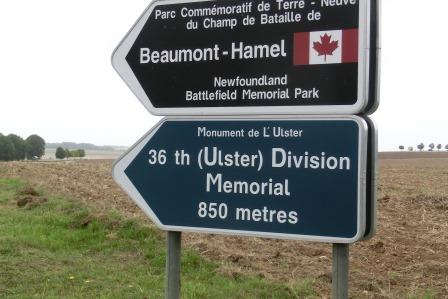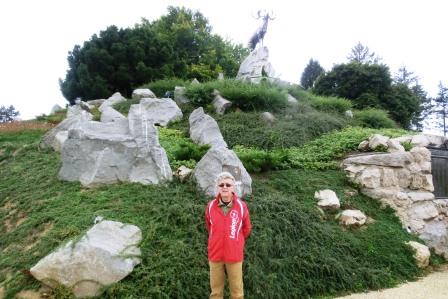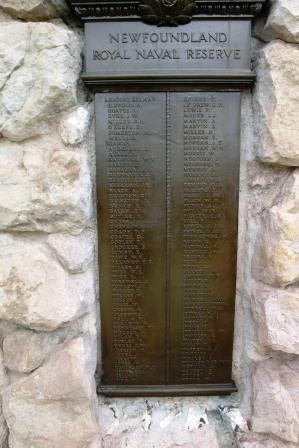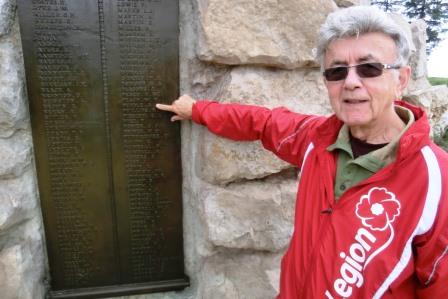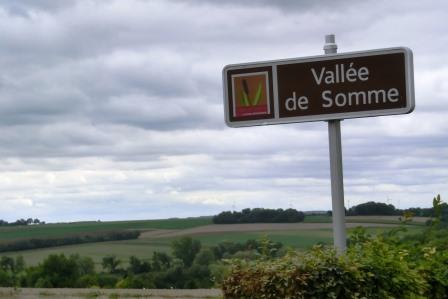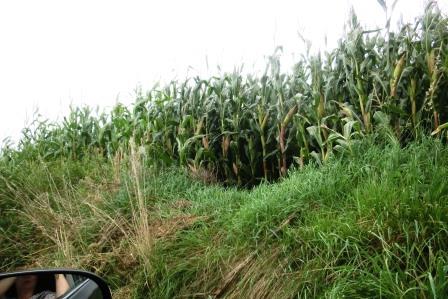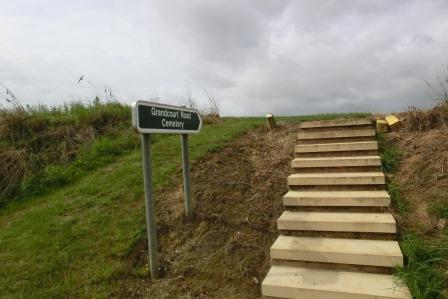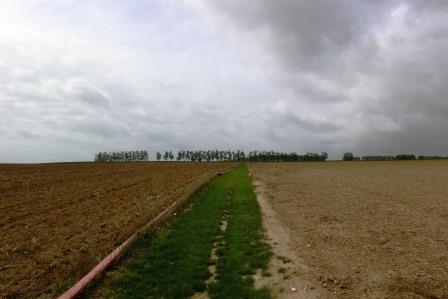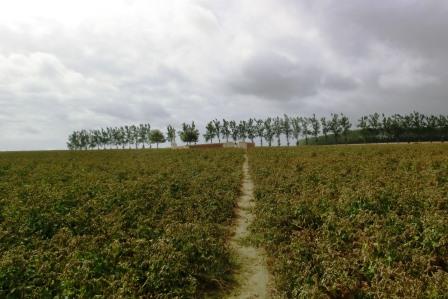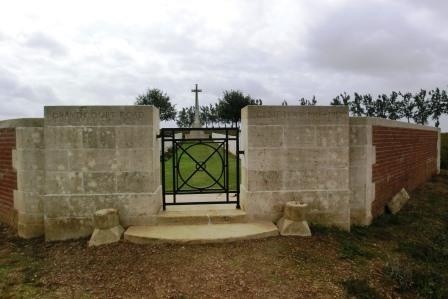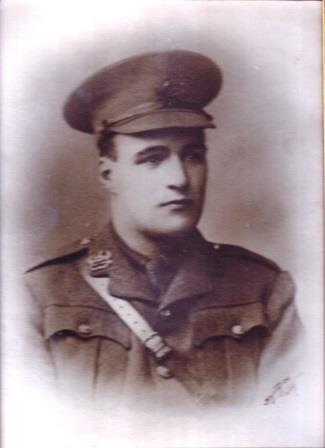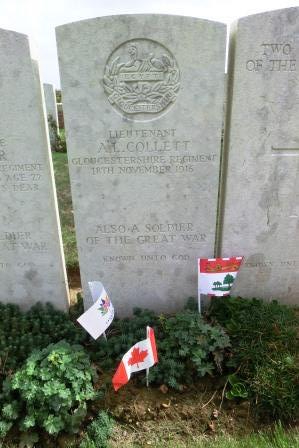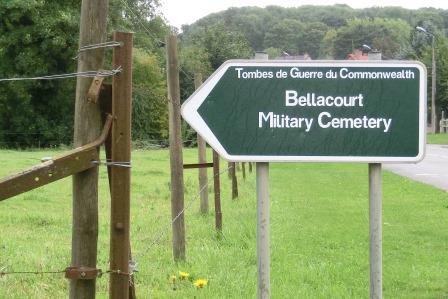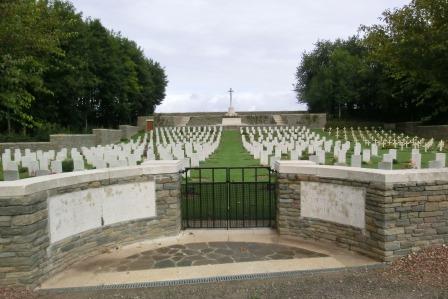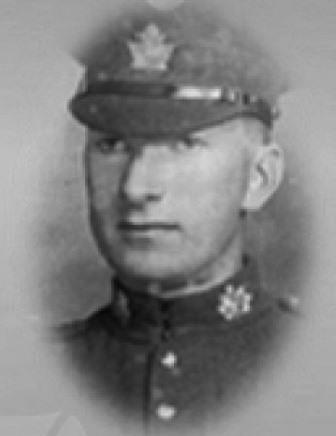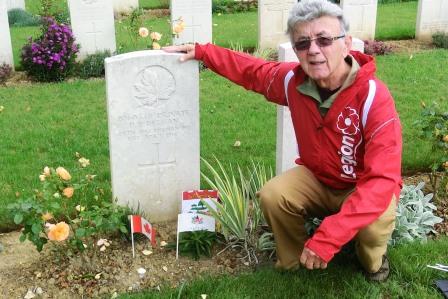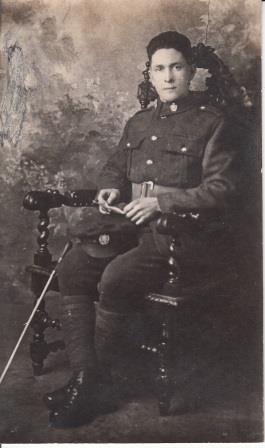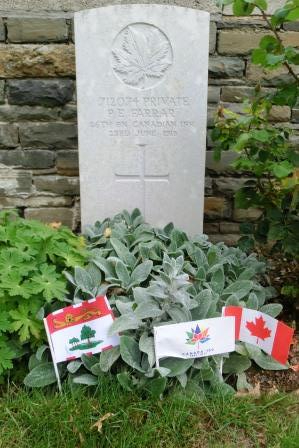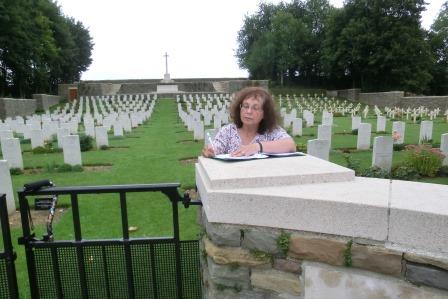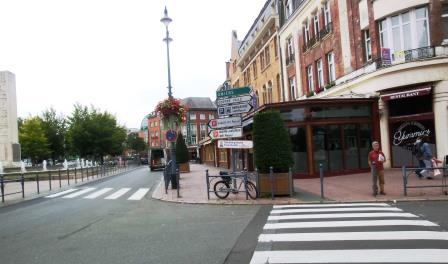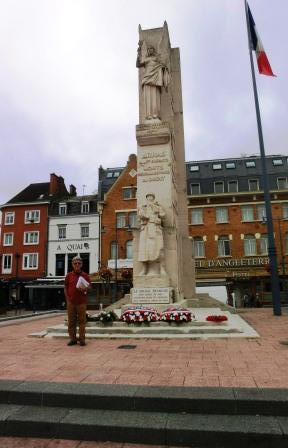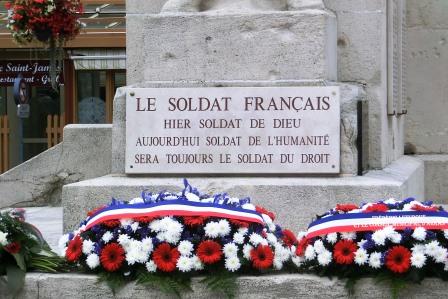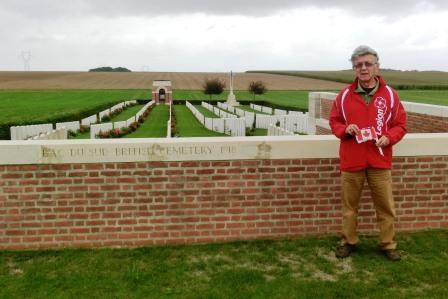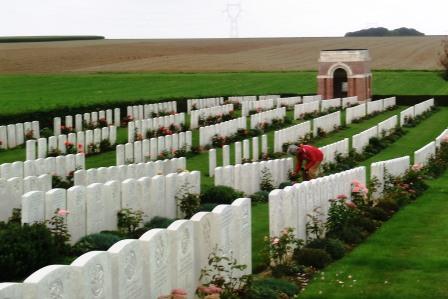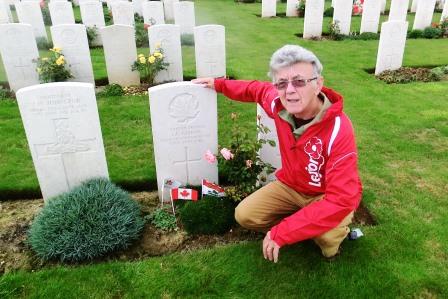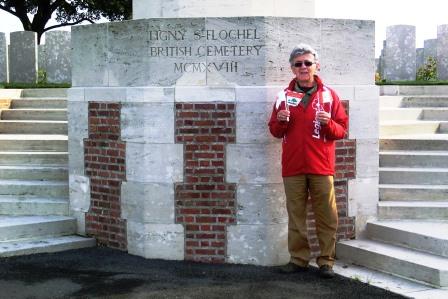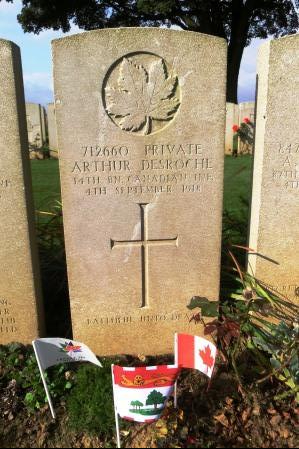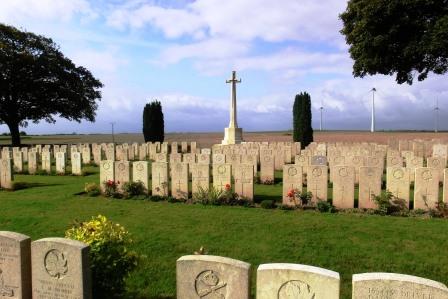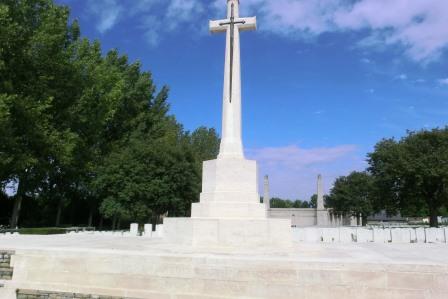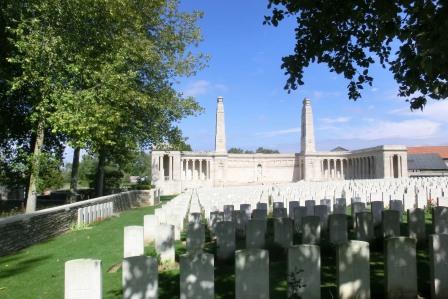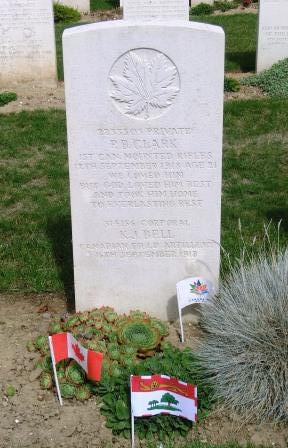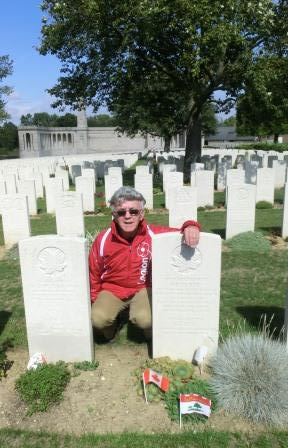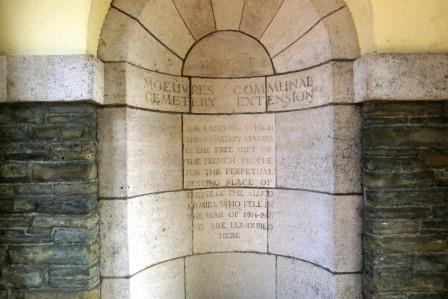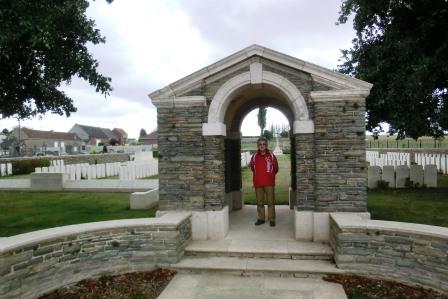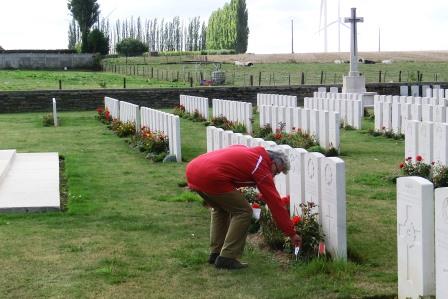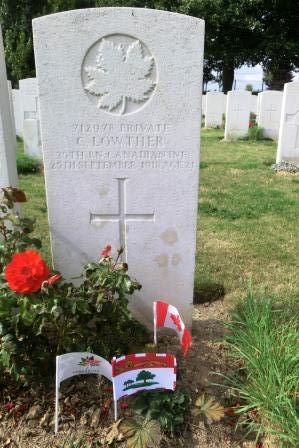September 30, 2017. After the visit to Beaumont-Hamel, we had only one cemetery left to visit in the area around Arras. Our previous attempt to find Manitoba Cemetery in Caix had been fruitless and frustrating. We’d asked in the village and were willingly directed to the only ‘English’ cemetery known in the area – the British Cemetery! There also was a German cemetery. Manitoba Cemetery? No one heard of it. We’d tried the neighbouring village of Beaufort, and got directed to the same British Cemetery.
…Where is that cemetery?…
Pieter spent a long time online looking at Google maps to try and find out why we’d had so much trouble, and eventually realized that the Commonwealth War Graves Commission direction to the cemetery was incorrect! The directions stated that the cemetery was “situated between the village of Caix and Beaufort.” According to Google maps, there was a small road between the two villages where the cemetery appeared to be located. However, there was NO Commonwealth War Grave Cemetery sign anywhere along the road between the villages, and no one we had asked had heard of it.
Back we went for a second try and arrived, again, in Caix. Pieter was determined to find the grave of James CAIRNS, if he had to search every road in the area.

We reach the village of Caix, location of Manitoba Cemetery. (Photo credit: Daria Valkenburg)
…A farm path led to the cemetery…
Following the information Pieter learned from studying Google maps, we actually found the cemetery, down a farm path. We’d actually been on the path the day before, but hadn’t gone down far enough as we thought it was a private road, not a public one, and there were no signs indicating that a cemetery was down the road.
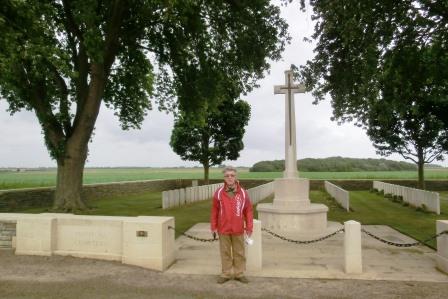
Pieter at the entrance to Manitoba Cemetery just outside Caix. (Photo credit: Daria Valkenburg)
According to the information panel at the cemetery, the village of Caix was captured from the Germans in February 1917, lost in March 1918, and recaptured by the Canadian Corps four months later. Named after the Manitoba Regiment of the 8th Canadian Battalion (known as Winnipeg Rifles), the cemetery has the graves of 2 British and 117 Canadians who fell in the recapture. Seven of the burials are unidentified.
…James was born in Prince Edward Island but moved to Manitoba…
This was the second James Cairns on the Cenotaph outside the Borden-Carleton Legion, one identified as James Ambrose Cairns, and the one buried in Manitoba Cemetery known as James Cairns. Born on February 22, 1897 in Kinkora, he was the son of Thomas Cairns and Mary Jane MacDonald.
The family moved to Manitoba from the island, and Cairns enlisted with the 190th Battalion Manitoba Regiment on July 8, 1916. He was killed in action during the Battle of Amiens on August 9, 1918. The Battle of Amiens, also known as the Third Battle of Picardy, was the opening phase of the Allied offensive which began on 8 August 1918, later known as the Hundred Days Offensive, that ultimately led to the end of the First World War.
…James was killed by machine gun fire…
According to the Canadian War Graves Register circumstances of death, James “…was instantly killed on the afternoon of August 9th 1918, while advancing with his battalion, in the face of stout opposition from the enemy, who placed a heavy barrage at the ‘jumping off’ place, and from hidden nests poured machine gun fire in the ranks of the troops who pushed forward. Location of the unit at the time of the casualty: West of the Meharicourt-Rouvroy road…”

Pieter placing flags by the grave of James Cairns at Manitoba Cemetery. (Photo credit: Daria Valkenburg)
While we don’t have a photo of James Cairns, we are lucky to have a glimpse into his personality, through a letter that the sister of James Cairns received on September 18, 1918 from the 83rd Canadian Battalion British Expeditionary Forces:
“My Dear Miss Cairns:
I regret that the conditions of war made it impossible for me to write you sooner regarding the death of your brother Pte. James Cairns. He died in the afternoon of Aug 9th during the second day of our advance in front of Amiens. Death was instantaneous, the result of a machine gun bullet. I buried the body in a cemetery on the battlefield where many of his comrades lie. The grave is marked and will be permanent.
I knew your brother. He was doing well and was liked by everybody. His life has been given for human freedom and it will not be in vain. God will be pleased to accept the sacrifice and to make through it a better world. I pray God will bless you abundantly and sustain you all in this trial.
Believe me to be yours in deepest sympathy.
J. W. Whillans – Capt. and Chaplain”
…James is not the only Islander buried in the cemetery!…
We thought this was it for our trip to the cemetery. All that was left was to write in the Guest Register. While doing so, we had a little surprise. The previous visitors from July 13 had come to honour their great-uncle and great-great uncle Theodore (Ted) ARSENAULT from Abrams Village! Who would believe that the last visitors to Manitoba Cemetery visited a soldier from Prince Edward Island?
Entries from the Guest Register at Manitoba Cemetery in Caix. (Photo credit: Daria Valkenburg)
We couldn’t leave without placing flags by another soldier from PEI!

Grave of T. E. Arsenault of Abrams Village. (Photo credit: Pieter Valkenburg)
With that, we left Manitoba Cemetery and drove a way down the farm road to see if there may be a sign we missed. There wasn’t, but we came across a reminder that this part of France saw suffering in WWII, as well as WW1.

Memorial down the road from the Manitoba Cemetery outside Caix which roughly reads “On June 7, 1940 31 French soldiers from the 41st Infantry Regiment and 10th Army of Rennes were massacred by the Nazis. Remember. Colonel Loichet, commander of the 41st Infantry Regiment” (Photo credit: Daria Valkenburg)
We drove around in the area, looking for a Commonwealth War Graves sign and found a very battered sign on the farm road, not on the main road, that you would see, not from Caix, but from Beaufort en Santerre. If you are planning to visit Manitoba Cemetery, the only other sign you will see is in Quesnel, from the D41. This town, however, is not mentioned in the cemetery info provided by the Commonwealth War Graves Commission! From Quesnel, you would head towards Beaufort en Santerre via D161 and take an unnumbered road, called Rue du Bois, to reach the cemetery. Where is Caix in all this? If you continue past the cemetery then you will reach Caix, which has several military cemeteries which are clearly marked, but not the one for Manitoba Cemetery.
In the next blog entries we reflect on the cemeteries we’ve seen so far and visit the ruins of Mount St. Eloi church before going on to Rouen to St. Sever Cemetery Extension. Do you have photos or information about James Cairns? Does anyone know the family members who visited the grave of Ted Arsenault of Abrams Village? Comments or stories? You can share them by emailing us at memorialtrail@gmail.com, comment on the blog, or tweet to @researchmemori1.
© Daria Valkenburg
…Want to follow our research?…
If you are reading this posting, but aren’t following our research, you are welcome to do so. Our blog address: https://onthewarmemorialtrail.com/
 4 countries, 6 weeks, 7,000 km – an unforgettable war memorial journey in Europe…. Daria’s book ‘No Soldier Buried Overseas Should Ever Be Forgotten‘ is available in print and e-book formats. Net proceeds of book sales help support research costs and the cost of maintaining this blog. For more information see https://nosoldierforgotten.com/
4 countries, 6 weeks, 7,000 km – an unforgettable war memorial journey in Europe…. Daria’s book ‘No Soldier Buried Overseas Should Ever Be Forgotten‘ is available in print and e-book formats. Net proceeds of book sales help support research costs and the cost of maintaining this blog. For more information see https://nosoldierforgotten.com/
Subscribe to our YouTube Channel: On The War Memorial Trail With Pieter Valkenburg: https://www.youtube.com/channel/UCJ591TyjSheOR-Cb_Gs_5Kw.
Never miss a posting! Subscribe below to have each new story from the war memorial trail delivered to your inbox.


